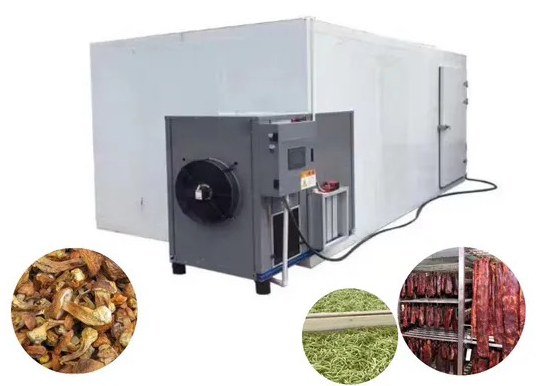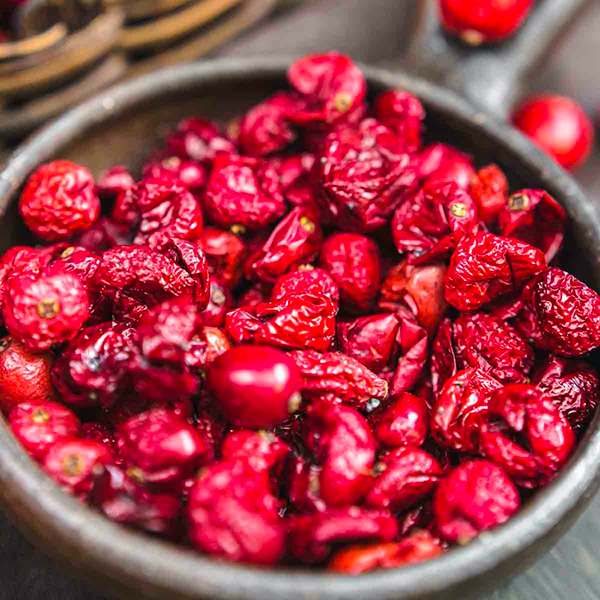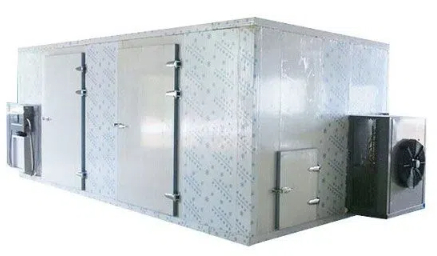
Content Menu
● Understanding the Basics
● Key Differences Between Freeze Dryers and Dehydrators
● Advantages of Each Method
>> Freeze Drying Advantages
>> Dehydrating Advantages
● Nutritional Benefits of Dehydrated Foods
● How Each Method Works
>> The Freeze Drying Process
>> The Dehydrating Process
● Cost Comparison
● Choosing Between Freeze Drying and Dehydrating
● Environmental Impact
● Conclusion
● FAQ
>> 1. What is the main difference between freeze drying and dehydrating?
>> 2. How long does each process take?
>> 3. Can I use both methods for the same foods?
>> 4. What types of foods are best suited for each method?
>> 5. Is it worth investing in a freeze dryer?
● Citations:
Food preservation is a crucial aspect of modern cooking and food storage, especially for those who want to extend the shelf life of their ingredients. Two popular methods for preserving food are freeze drying and dehydrating. While both processes aim to remove moisture from food, they do so in fundamentally different ways, leading to distinct outcomes in terms of flavor, texture, and nutritional value. This article will explore the differences between a freeze dryer and a food dehydrator, helping you understand which method might be best for your needs.

Understanding the Basics
Freeze Drying:
Freeze drying, or lyophilization, is a complex process that involves freezing the food at very low temperatures (typically around -40°F) and then reducing the pressure in the chamber. This causes the ice in the food to sublimate directly into vapor without passing through a liquid phase. The result is food that retains its original shape, flavor, and nutritional content while having a shelf life of up to 25 years when properly packaged.
Food Dehydrating:
In contrast, food dehydrators use heat to evaporate moisture from food. They typically operate at temperatures ranging from 90°F to 145°F. The process involves circulating warm air around the food items, which removes moisture slowly. While this method is simpler and often more affordable than freeze drying, it can alter the texture and flavor of the food and may lead to some nutrient loss.
Key Differences Between Freeze Dryers and Dehydrators
| Feature | Freeze Dryer | Food Dehydrator |
| Process | Freezes food and sublimates ice into vapor | Uses heat to evaporate moisture |
| Temperature Range | Typically below -40°F | Typically between 90°F and 145°F |
| Nutrient Retention | Retains about 97% of nutrients | Some nutrient loss, especially heat-sensitive vitamins |
| Texture Preservation | Maintains original texture | Changes texture; can become chewy or crunchy |
| Shelf Life | Up to 25 years | Generally up to 1 year |
| Cost | Higher initial investment (around $2,300+) | More affordable (around $50 - $300) |
Advantages of Each Method
Freeze Drying Advantages
- Nutritional Value: Freeze drying preserves nearly all vitamins and minerals due to the low temperatures used during the process.
- Long Shelf Life: Foods can last for decades without refrigeration if stored properly.
- Flavor Retention: The process maintains the original flavor profile of the food.
- Versatility: Can be used for a wide range of foods including fruits, vegetables, meats, dairy products, and even prepared meals like soups.
Dehydrating Advantages
- Cost-Effective: Dehydrators are generally much cheaper than freeze dryers.
- Simplicity: Easier to use with straightforward operation; ideal for beginners.
- Faster Process: Dehydrating usually takes less time than freeze drying.
- Ideal for Snacks: Perfect for making jerky, fruit leathers, and dried fruits.
Nutritional Benefits of Dehydrated Foods
Dehydrating foods not only extends their shelf life but also concentrates their flavors and nutrients. Here are some health benefits associated with dehydrated foods:
- Increased Fiber Content: Dehydration can enhance fiber concentration in fruits and vegetables, promoting digestive health.
- Reduced Risk of Foodborne Illnesses: By removing moisture that bacteria need to thrive, dehydrated foods have a lower risk of spoilage.
- Convenient Storage: Dried foods take up significantly less space than fresh produce, making them ideal for long-term storage.
- Versatile Usage: Dehydrated foods can be rehydrated easily for use in various recipes or enjoyed as snacks on their own.
How Each Method Works
The Freeze Drying Process
1. Freezing Phase: The food is frozen rapidly at extremely low temperatures.
2. Vacuum Phase: Once frozen, the pressure is lowered in the chamber. This allows ice to turn directly into vapor without becoming liquid (sublimation).
3. Secondary Drying Phase: Any remaining moisture is removed by applying heat under vacuum conditions.
This meticulous process ensures that the structure and integrity of the food are preserved while eliminating moisture effectively.
The Dehydrating Process
1. Preparation: Food is cut into uniform pieces for even drying.
2. Heat Application: Warm air is circulated around the food using fans at controlled temperatures.
3. Moisture Removal: The heat causes moisture to evaporate slowly from the food items.
This method is less energy-intensive but can lead to changes in texture and some nutrient loss due to higher temperatures.
Cost Comparison
When considering an investment in either technology, cost plays a significant role:
- Freeze Dryers: Typically range from $2,300 to over $3,000 depending on capacity and features. They require more energy due to their complex processes.
- Dehydrators: Prices can start as low as $50 for basic models and go up to $300 for more advanced units. They consume significantly less energy compared to freeze dryers.

Choosing Between Freeze Drying and Dehydrating
Choosing between a freeze dryer and a dehydrator depends on several factors:
- Budget Considerations: If you're looking for an economical option, a dehydrator is likely your best bet. If you have a higher budget and are serious about long-term food preservation with minimal nutrient loss, consider investing in a freeze dryer.
- Food Types You Want to Preserve: If you want to preserve delicate items like herbs or make snacks like fruit leathers, a dehydrator is suitable. For preserving full meals or sensitive ingredients like dairy or meats without compromising quality, opt for freeze drying.
- Storage Space Available: Freeze dryers are typically larger machines that require more space compared to compact dehydrators.
Environmental Impact
Both methods have varying environmental impacts:
- Energy Efficiency: Dehydrators tend to be more energy-efficient than freeze dryers due to their simpler operation. This makes them more sustainable options for home users who may not need extensive preservation capabilities.
- Waste Reduction: Both methods help reduce food waste by allowing users to preserve excess produce rather than letting it spoil.
Conclusion
Both freeze dryers and dehydrators serve essential roles in food preservation but cater to different needs and preferences. Freeze dryers excel in retaining nutrients and extending shelf life significantly but come with higher costs and complexity. On the other hand, dehydrators are user-friendly and budget-friendly but may sacrifice some nutritional value and shelf life.
In summary:
- If your priority is long-term storage with maximum nutrient retention and flavor preservation, invest in a freeze dryer.
- If you seek an affordable solution for making snacks or preserving seasonal produce with acceptable nutrient loss, a dehydrator will meet your needs effectively.
Ultimately, understanding your specific needs will guide you toward selecting the right method for your kitchen or business operations.

FAQ
1. What is the main difference between freeze drying and dehydrating?
Freeze drying removes moisture by freezing food first and then sublimating ice into vapor under vacuum conditions. Dehydrating uses heat to evaporate moisture from food over time.
2. How long does each process take?
Freeze drying can take anywhere from 20 hours to several days depending on the type of food being processed. Dehydrating typically takes between 4 to 12 hours.
3. Can I use both methods for the same foods?
Yes, you can use both methods depending on your goals; however, results will differ significantly in texture and nutritional value.
4. What types of foods are best suited for each method?
Freeze drying is ideal for fruits, vegetables, meats, dairy products, and complete meals. Dehydrators work well with fruits, vegetables, herbs, jerky, and snacks.
5. Is it worth investing in a freeze dryer?
If you plan on preserving large quantities of food long-term with minimal nutrient loss, then yes—it can be a worthwhile investment despite its higher cost.
Citations:
[1] https://www.webstaurantstore.com/guide/741/food-dehydrators-buying-guide.html
[2] https://greenthumbdepot.com/blogs/guides/key-advantages-and-disadvantages-of-freeze-drying
[3] https://www.barnalab.com/en/blog/freeze-drying-vs-other-food-drying-and-preservation-methods/
[4] https://greenthumbdepot.com/blogs/guides/freeze-dryer-vs-dehydrator
[5] https://www.bestbuy.com/discover-learn/10-reasons-to-buy-a-food-dehydrator/pcmcat1634332391134
[6] https://canadagrowsupplies.com/blogs/main/what-are-the-disadvantages-and-advantages-of-freeze-drying
[7] https://www.terrafoodtech.com/en/food-preservation-methods-comparison/
[8] https://www.lowes.com/n/buying-guide/freeze-dryer-vs-dehydrator
[9] https://www.webmd.com/diet/dehydrating-food-good-for-you
[10] https://kanpaifoods.com/blogs/news/freeze-dry-vs-dehydrated-foods-comparing-preservation-methods











